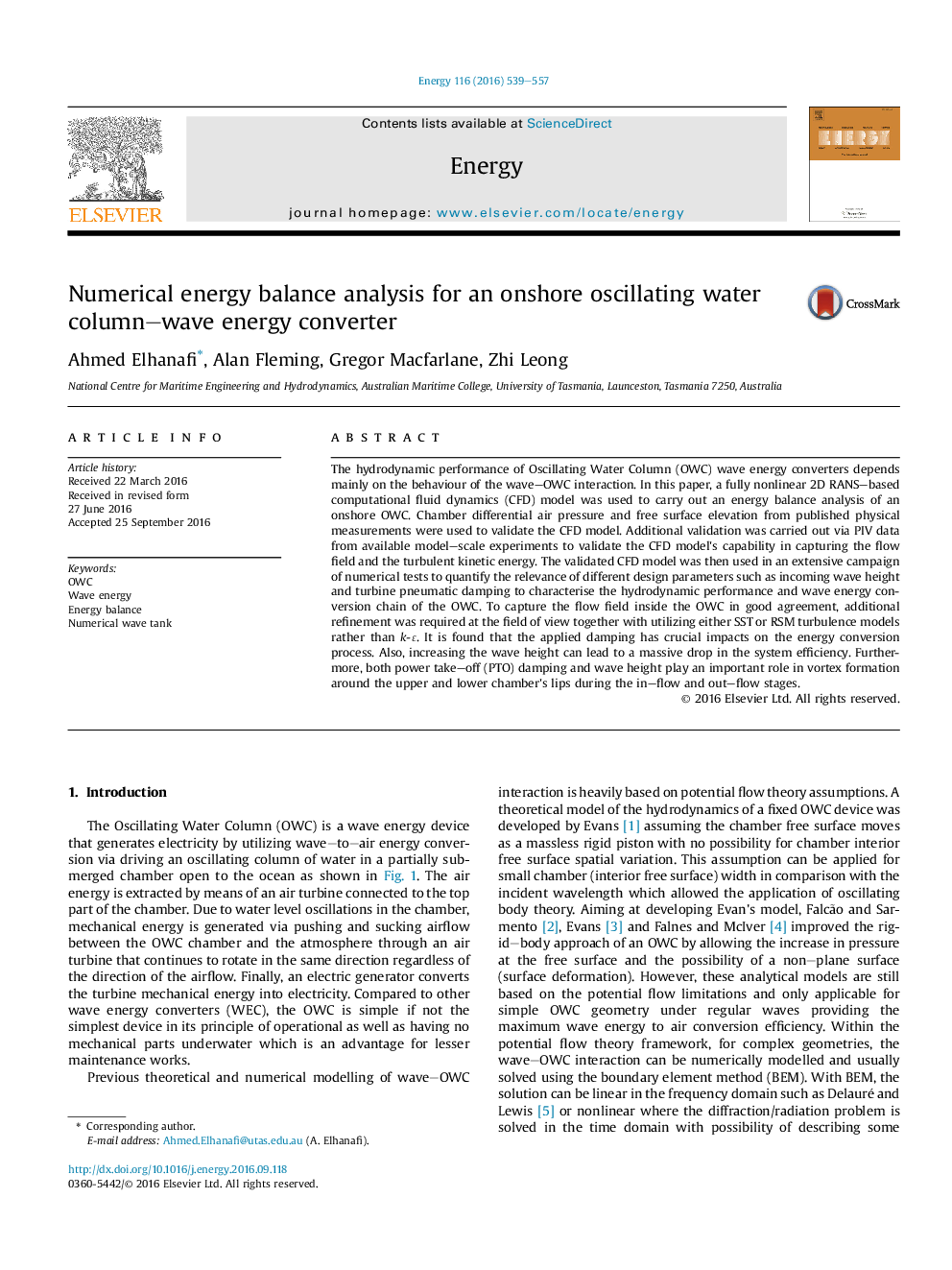| Article ID | Journal | Published Year | Pages | File Type |
|---|---|---|---|---|
| 5477309 | Energy | 2016 | 19 Pages |
Abstract
The hydrodynamic performance of Oscillating Water Column (OWC) wave energy converters depends mainly on the behaviour of the wave-OWC interaction. In this paper, a fully nonlinear 2D RANS-based computational fluid dynamics (CFD) model was used to carry out an energy balance analysis of an onshore OWC. Chamber differential air pressure and free surface elevation from published physical measurements were used to validate the CFD model. Additional validation was carried out via PIV data from available model-scale experiments to validate the CFD model's capability in capturing the flow field and the turbulent kinetic energy. The validated CFD model was then used in an extensive campaign of numerical tests to quantify the relevance of different design parameters such as incoming wave height and turbine pneumatic damping to characterise the hydrodynamic performance and wave energy conversion chain of the OWC. To capture the flow field inside the OWC in good agreement, additional refinement was required at the field of view together with utilizing either SST or RSM turbulence models rather than k-É. It is found that the applied damping has crucial impacts on the energy conversion process. Also, increasing the wave height can lead to a massive drop in the system efficiency. Furthermore, both power take-off (PTO) damping and wave height play an important role in vortex formation around the upper and lower chamber's lips during the in-flow and out-flow stages.
Related Topics
Physical Sciences and Engineering
Energy
Energy (General)
Authors
Ahmed Elhanafi, Alan Fleming, Gregor Macfarlane, Zhi Leong,
